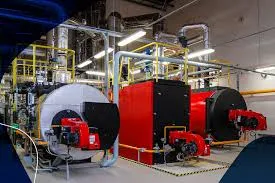
نوفمبر . 06, 2024 21:40 Back to list
Different Types of Steam Produced in Boilers and Their Applications
Types of Steam in Boilers
Boilers are essential components of many industries, ranging from power generation to food processing. They operate by converting water into steam, which can then be used for heating, power generation, or various industrial processes. Understanding the different types of steam produced in boilers is crucial for optimizing their performance and efficiency. In this article, we will explore the various types of steam commonly generated in boilers, their properties, and their applications.
1. Saturated Steam
Saturated steam is the simplest and most fundamental type of steam produced in a boiler. It occurs when water is heated to its boiling point, resulting in steam that is in equilibrium with the liquid phase. At this stage, the steam contains a maximum amount of energy at a particular pressure and temperature. Saturated steam is commonly used in various applications, including heating systems, food processing, and sterilization.
One of the key characteristics of saturated steam is that it can exist at different pressures and temperatures. For instance, at a pressure of 100 kPa (about atmospheric pressure), saturated steam has a temperature of approximately 100 degrees Celsius. As pressure increases, both the temperature and energy content of the steam increase. This makes saturated steam a versatile option for industrial processes that require specific temperature and pressure conditions.
Superheated steam is steam that has been heated beyond its saturation point. This means that it exists at a temperature higher than that of saturated steam at the same pressure. Superheating is achieved by passing the saturated steam through an additional heat exchanger or superheater, where further heat is imparted. Superheated steam can reach much higher temperatures while maintaining its gaseous state, which enhances its thermal efficiency and energy capacity.
types of steam in boiler

Industries often prefer superheated steam for driving turbines in power plants, as it allows for a more efficient conversion of thermal energy into mechanical energy. Additionally, superheated steam has lower moisture content, which helps in avoiding erosion and corrosion in turbines, thereby extending their operational lifespan.
3. Wet Steam
Wet steam, also referred to as saturated vapor with entrained liquid water, is an undesirable condition in boiler operations. It contains both steam and water droplets, resulting in a mixture that can lead to inefficiencies and mechanical damage in systems designed for dry steam. Wet steam typically occurs when there is insufficient heating, or the steam is not adequately separated from water in the boiler.
In industrial applications, especially in cogeneration systems and steam turbines, wet steam can cause significant issues such as water hammer, erosion, and decreased thermal efficiency. Therefore, it is crucial to maintain the quality of steam produced by ensuring proper boiler operation and utilizing appropriate separation technology.
4. Flash Steam
Flash steam is produced when hot water is depressurized, causing it to vaporize rapidly. This phenomenon occurs in systems where high-pressure condensate is released to a lower pressure, allowing a portion of the water to change into steam. Flash steam can be harnessed for additional heating or used as a source of energy in cogeneration systems.
Understanding the types of steam generated in boilers is vital for engineers and technicians working in various industries. By optimizing the production of saturated, superheated, wet, and flash steam, facilities can improve energy efficiency, reduce operational costs, and enhance the longevity of their equipment. Ultimately, proper steam management can contribute significantly to the sustainability and effectiveness of industrial processes.
-
Efficient Biomass Fired Hot Water Boiler | AI Heating Solution
NewsAug.01,2025
-
High-Efficiency Gas Thermal Oil Boilers | HPT Models
NewsJul.31,2025
-
Oil Fired Hot Water Boilers Sale - High Efficiency & Affordable
NewsJul.31,2025
-
High-Efficiency Commercial Oil Fired Steam Boiler for Industry
NewsJul.30,2025
-
High-Efficiency Biomass Fired Thermal Oil Boiler Solutions
NewsJul.30,2025
-
High Efficiency Gas Fired Thermal Oil Boiler for Industrial Heating
NewsJul.29,2025
Related PRODUCTS






















